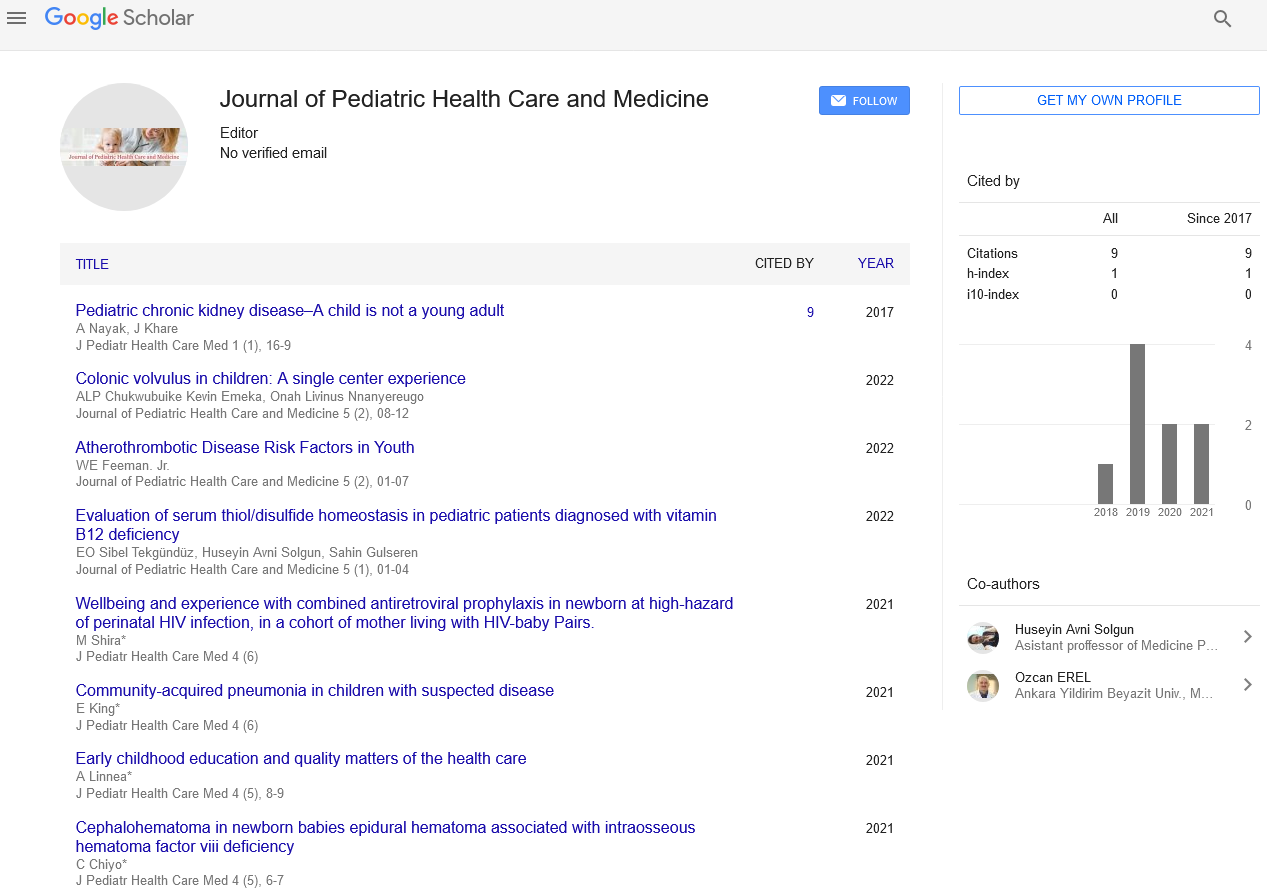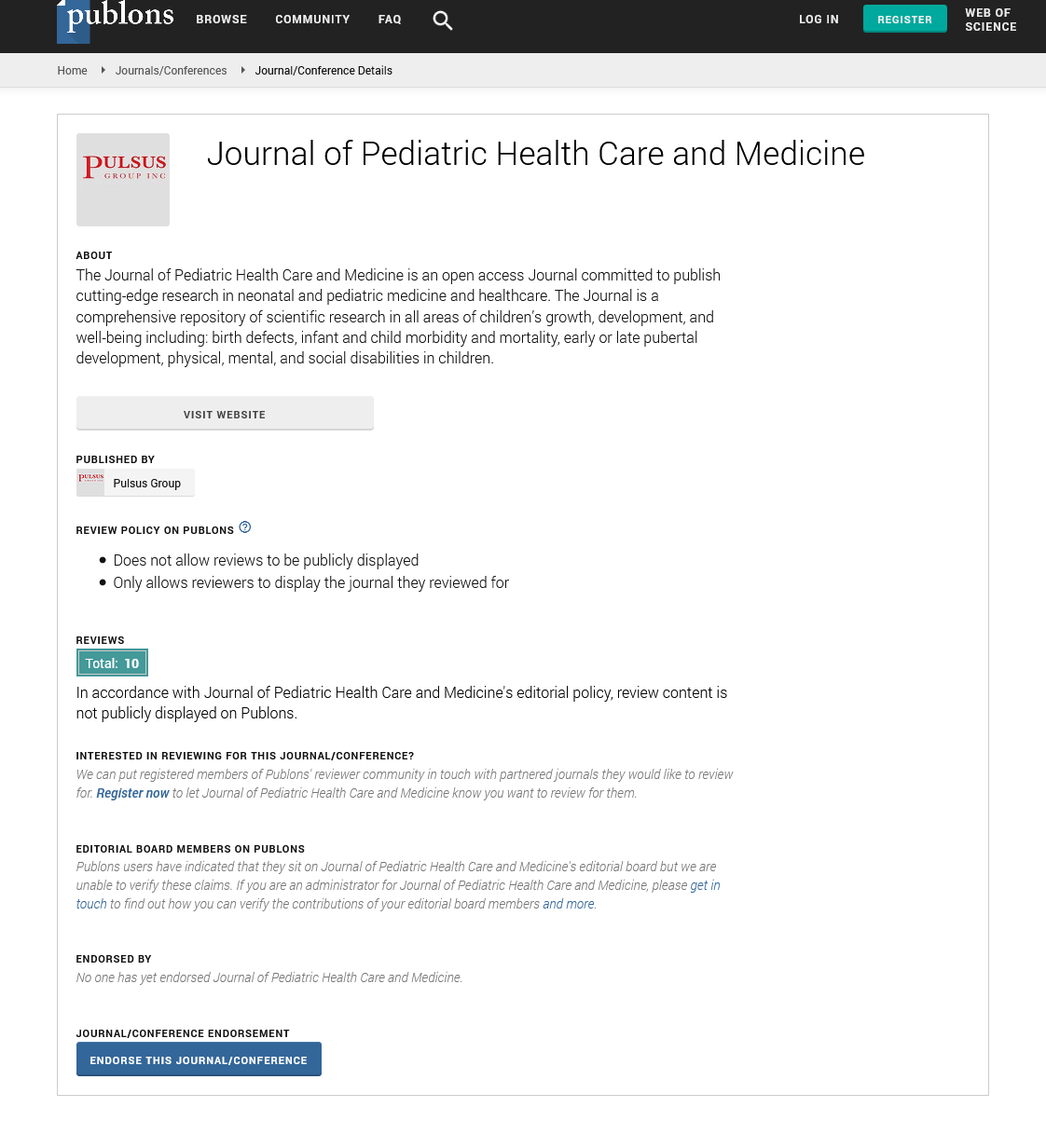Euro Pediatrics 2020: Successful 30 years follow up after surgery for dystopic lingual goiter in 2 adolescents
Received: 30-Dec-2020 Accepted Date: Jan 08, 2021; Published: 20-Jan-2021
Citation: None
This open-access article is distributed under the terms of the Creative Commons Attribution Non-Commercial License (CC BY-NC) (http://creativecommons.org/licenses/by-nc/4.0/), which permits reuse, distribution and reproduction of the article, provided that the original work is properly cited and the reuse is restricted to noncommercial purposes. For commercial reuse, contact reprints@pulsus.com
Abstract
During embryonic development thyroid tissue gradually falls down fromtongue root to the typical thyroid gland’s place. Lingual Goiter emerge in 1 patients of 100.000 population and in 1 (0.03%) of 3000 Thyroid Diseases patient. We observed 8 (0.025%) lingual goiter (LG) of 32022 thyroid diseases patient (1973 - 2019) and 3 of them were operated on. As a result of thyroid tissue (TT) omitting LG, supra – praehyoid - behind and infrahyoid goiterof thyroid remnants along of thyroglossal duct could appeared with (ectopia) or without (dystopia) presence TT in typical place.Indications for Surgical treatment of a LG patients: relapse or profuse bleeding,aggressive groves of LG with dyspneaand dysphagia; suspicions of malignancy, thyrotoxic LG
Introduction
During embryonic development thyroid tissue gradually falls down fromtongue root to the typical thyroid gland’s place. Lingual Goiter emerge in 1 patients of 100.000 population and in 1 (0.03%) of 3000 Thyroid Diseases patient. We observed 8 (0.025%) lingual goiter (LG) of 32022 thyroid diseases patient (1973 - 2019) and 3 of them were operated on. As a result of thyroid tissue (TT) omitting LG, supra – praehyoid - behind and infrahyoid goiterof thyroid remnants along of thyroglossal duct could appeared with (ectopia) or without (dystopia) presence TT in typical place.Indications for Surgical treatment of a LG patients: relapse or profuse bleeding,aggressive groves of LG with dyspneaand dysphagia; suspicions of malignancy, thyrotoxic LG. Thyroid disorders are one of the most common endocrine problems in children and adolescents. Children with thyroid disorders usually present with an enlargement of the thyroid gland (goitre), with or without symptoms of thyroid hormone deficiency or excess. These symptoms are generally insidious in onset, which may delay diagnosis by several weeks to several months. Because a goitre is often the first sign of thyroid disease, the diagnostic considerations can be approached from the perspective of the goitre. By far, the most frequent cause of a goitre is autoimmune thyroid disease, although a benign colloid goitre is also a common cause. The present review focuses on the diagnostic approach to a child with a hypothyroid, hyperthyroid or euthyroid goitre. The most common finding related to thyroid disease is a diffuse enlargement of the thyroid, with the right lobe being frequently larger than the left lobe. The enlargement of the thyroid is generally mediated by an increase in the pituitary-derived thyroid stimulating hormone (TSH) or in antibodies that bind to the TSH receptor, such as the thyroid stimulating immunoglobulins (TSIs) found in Graves disease. Inflammation or infiltration may cause diffuse, symmetrical enlargement, although the gland is usually asymmetric and nodular. The most common inflammatory process is autoimmune thyroiditis
Keywords
Goitre, Hyperthyroidism, Hypothyroidism, Thyroid nodule
Material and Methods
Patient 39 years old woman with lingual, suprahyoid and praehyoid thyroid gland goiter (1997). She had tumor mass in the root of tongue, supra - and praehyoid part of the neck from 10 years old. Since 1994 the tumors has increased in size quickly and caused of dyspnea, dysphagia and nasonnement voice changing. CT scans of the patient neck has shoved: LG narrowed of oropharings, TT is absent in typical place. Surgery of patients (August 08. 1997). submandibular approach has findLG, suprahyoid, praehyoid goiters and was take it out 04. O8. 1997. 2.5 month later after patients operation was performed Tc99m scintigram - radiodrug accumulation was absent on the neck. She takes the replacement LT4 therapy.
Conclusion
1. Wait-and-see policy of lingual goiterpatients treatment can be dangerous because a suffocation might occur.
2. Lingual goiter would be successfully removal through neck submandibular approach with lingual root resection. This work is partly presented at 32nd European Pediatrics Congress on July 22-23, 2020 an Online Event.
REFERENCES
- 1. Rallison ML, Dobyns BM, Meikle AW, Bishop M, Lyon JL, Stevens W. Natural history of thyroid abnormalities: Prevalence, incidence, and regression of thyroid diseases in adolescents and young adults. Am J Med. 1991;91:363–70.
- 2. Lafranchi S. Thyroiditis and acquired hypothyroidism. Pediatr Ann. 1992;21:29–39.
- 3. Bachrach LK, Foley TP. Thyroiditis in children. Pediatr Rev. 1989;11:184–91.
- 4. Rallsion M, Dobyns BM, Keating FR, et al. Occurrence and natural history of chronic lymphocytic thyroiditis in childhood. J Pediatr. 1975;86:675–82.
- 5. Weetman AP. Autoimmune thyroiditis: Predisposition and pathogenesis. Clin Endocrinol. 1992;36:307–23.
- 6. Beever K, Bradbury J, Phillips D, et al. Highly sensitive assays of autoantibodies to thyroglobulin and to thyroid peroxidase. Clin Chem. 1989;35:1949–54.
- 7. McKenna MJ, Herskowitz R, Wolfsdorf JI. Screening for thyroid disease in children with IDDM. Diabetes Care. 1990;13:801–3.
- 8. Riley WJ, Maclaren NK, Lezotte DC, Spillar RP, Rosenbloom AL. Thyroid autoimmunity an insulindependent diabetes mellitus: The case for routine screening. J Pediatr. 1981;99:350–4.
- 9. Boyages SC. Iodine deficiency disorders. J Clin Endocrinol Metab. 1993;77:587–91.
- 10. Cao XY, Jiang XM, Dou ZH, et al. Timing of vulnerability of the brain to iodine deficiency in endemic cretinism. N Engl J Med. 1994;331:1739–44.
- 11. Dallas JS, Foley TP., Jr . Hyperthyroidism. In: Lifshitz F, editor. Pediatric Endocrinology: A Clinical Guide. 3rd edn. New York: Marcel Dekker; 1995. pp. 401–14.
- 12. Sussman L, Labrik L, Clayton GW. Hyperthyroidism attributable to a hyperfunctioning thyroid carcinoma. J Pediatr. 1968;72:208–13.
- 13. LaFranchi S. Adolescent thyroid disorders. Adolesc Med. 1994;5:65–86. 14. Foley TP. Disorders of the thyroid in children. In: Sperling MA, editor. Pediatric Endocrinology. 1st edn. Philadelphia: WB Saunders Company; 1996. pp. 171–94.






